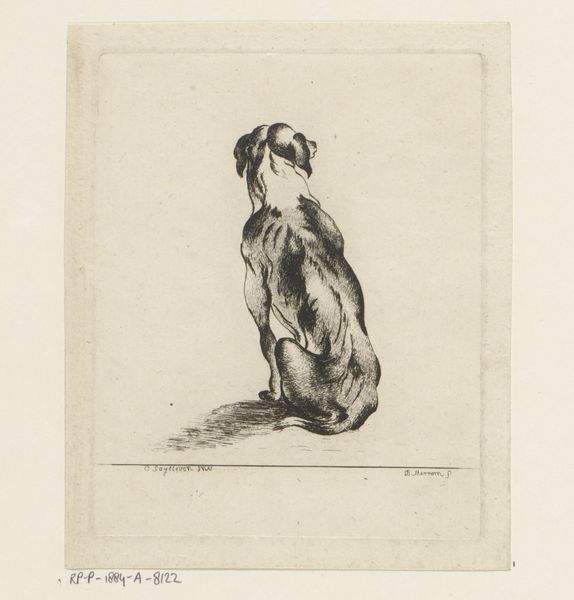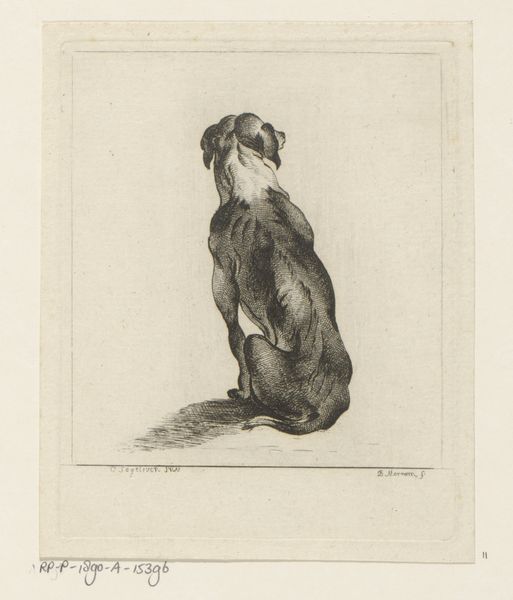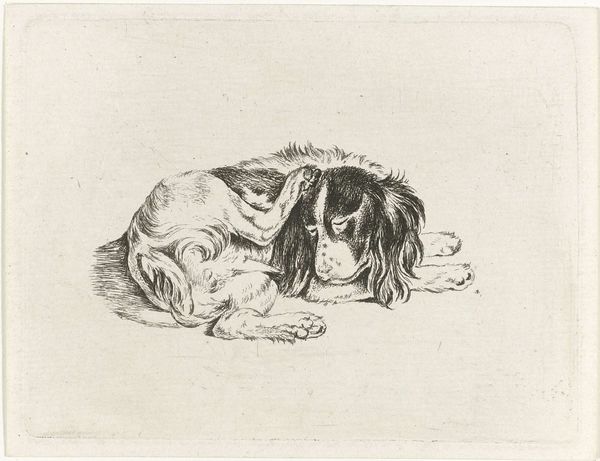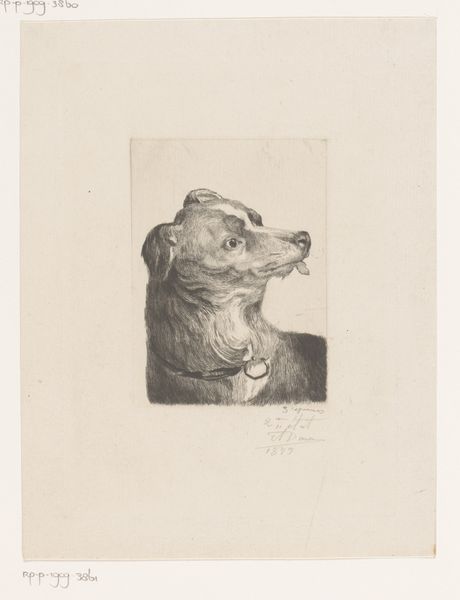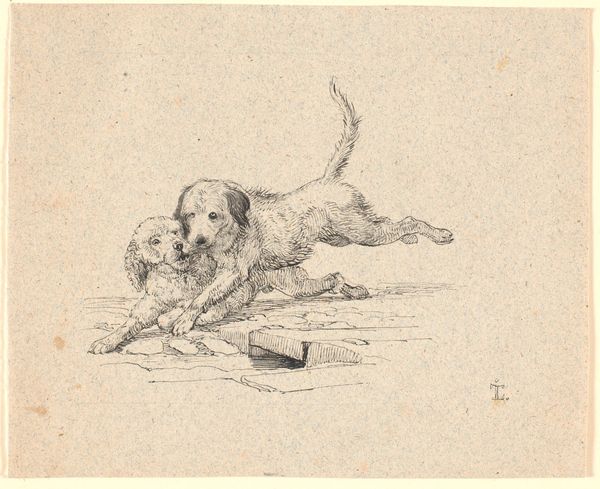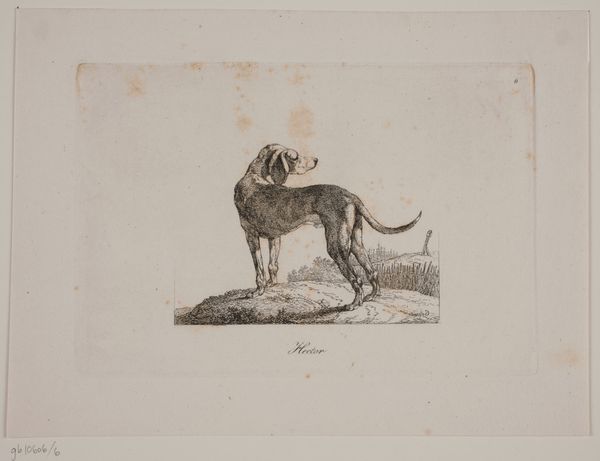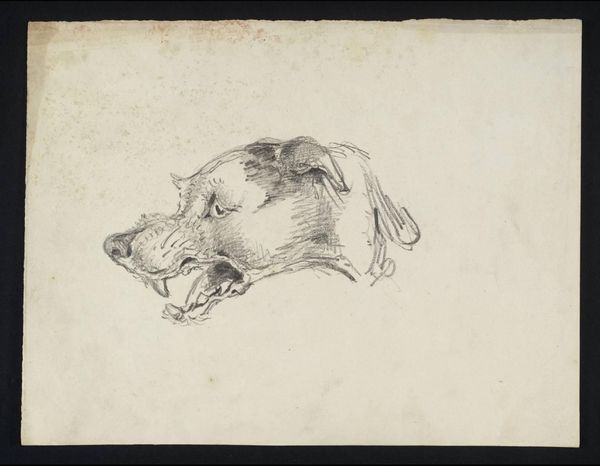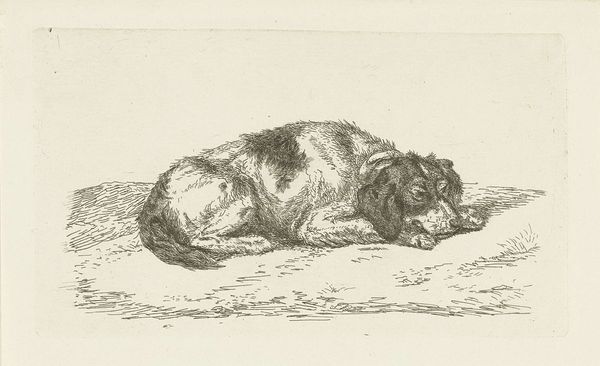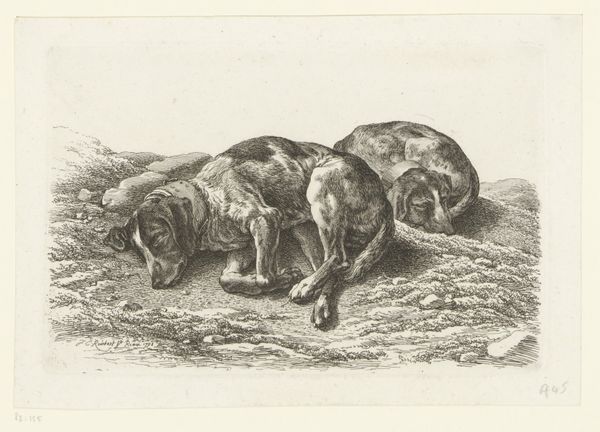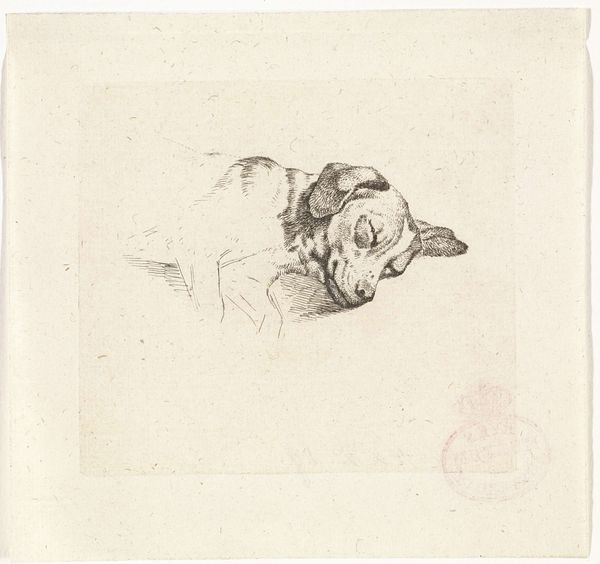
drawing, pencil
#
drawing
#
pencil sketch
#
dog
#
pencil
#
pencil work
#
realism
Dimensions: height 340 mm, width 465 mm
Copyright: Rijks Museum: Open Domain
Curator: Here we have “Slapende Hond,” or "Sleeping Dog," a pencil drawing by Carel Christiaan Antony Last, which dates from 1818 to 1876. It’s part of the Rijksmuseum's collection. What strikes you first about this piece? Editor: The vulnerability of the dog, curled up so trustingly. It's rendered with such simple lines, yet conveys so much about safety and perhaps even a bit of loneliness within that slumber. Curator: It's interesting to consider the social status of dogs during Last's time, given his realism style. This wasn't some idealized depiction. What breed do you think? Look closely at the density of the line work to denote form and fur. Editor: It’s hard to tell definitively, but perhaps a type of Spaniel mix. The varying pressures in the pencil strokes create volume effectively. I'm intrigued by what function a drawing like this would have served—was it study for a painting, a private sketch, or something else? The depiction humanizes the animal form, bringing us back to issues of class and species. Curator: Drawings such as these, quick sketches with readily available materials, became increasingly popular for capturing intimate, everyday moments. The availability and affordability of pencil as a medium, thanks to developments in graphite mining and production techniques, also democratized art-making to a certain extent. And the consumption and circulation of such images… Who was Last picturing as seeing it? Editor: It makes me think about the changing role of pets within the domestic sphere as well. Was the sleeping dog a reflection of a certain comfortable privilege, a counterpoint perhaps to human suffering present throughout the era? Was the artist subtly nodding to or pushing against the boundaries and behaviors present in everyday life, offering his viewers both a portrait of realism and perhaps subtle social commentary. Curator: It does provide a tender look into 19th century domesticity. So very good at presenting what at first seems to be 'just' a resting dog. Editor: I agree, looking closely makes me reflect on human-animal relations during this period and it’s a useful touchstone to reconsider modern inequalities. Curator: A fascinating example of how the careful selection of accessible materials can make for impactful observations!
Comments
No comments
Be the first to comment and join the conversation on the ultimate creative platform.
